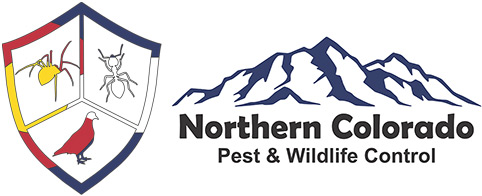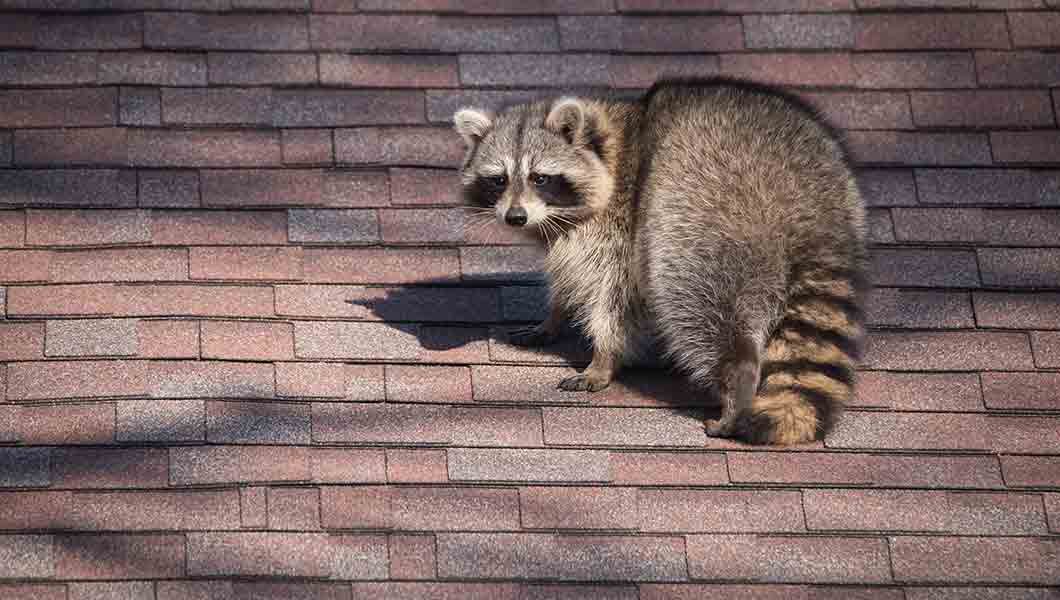Background Information
The unmistakable raccoon is very common throughout the front range of Colorado. With their grayish coat, facial mask, and ringed tail they are easy to identify. They vary in size from 40 to 70 cm in length and weigh 7 to 20lbs. They will eat almost anything (omnivores). Raccoons are nocturnal, so if you happen to see them during the day it might suggest that the animal is sick or injured. Raccoons are notorious for breaking into homes and businesses to create a nest and have their young. They have a gestation period of about 65 days and have 2 to 5 young per litter. They are extremely powerful and any weak spot(s) on your home or business is an invitation they cannot ignore. Common problems associated with raccoons include living in attics, crawlspaces, chimneys, coming in dog doors, eating out of dumpsters and tearing up turfgrass in search of grubs. Even though they look nice, do not try to touch them; they have a nasty bite and can carry diseases. They are not usually aggressive but will become so if you corner them.
Treatments for Raccoons
Treatment for raccoons is highly dependent upon the time of year and the problem that the customer is having. During nesting season, it is common to use a male pheromone to deter the female from the attic, crawlspace, or chimney. The pheromone works to make the mother raccoon move the babies elsewhere because a male raccoon might kill babies if he comes across them. Other common treatment techniques include trapping and one-way doors. Trapping can be used to capture individual raccoons to remove them from the property and to relocate them elsewhere. One-way doors can also be used to get animals outside of a dwelling and they also prevent re-entry when the animal returns. This allows the animal to stay in the environment in which it is comfortable, but it blocks them from living inside. Most of these techniques are in conjunction with exclusion. Once the raccoons are out of the dwelling, we exclude the area to prevent future entry. It is important for the customer to understand why the raccoon was there in the first place. Usually it is because there was easy access to the roof via a tree that is touching, the raccoon is feeding on pet food that is left outside or bird seed that is spilled across the ground, or the chimney is missing a chimney cap. It is common for customers to encourage raccoon activity inadvertently. The technician will discuss these reasons in further depth to help minimize the need for us to return later.
Service Expectations
All NOCO Pest and Wildlife Control exclusion services come with a one-year warranty against the raccoons getting back inside. The exclusion is used to prevent the animals from gaining entry inside and to block moisture from getting inside the structure. It is usually recommended that a roofer, contractor, or builder follow behind us and make sure that everything is structurally sound. In rare cases, raccoons can chew on wire inside attics, which can lead to flickering lights or lights that do not work at all. In this case, call a qualified electrician. In situations where raccoons have been inside for numerous years, a clean-up might be required to pickup the unwanted feces. Neglected properties sometime need complete insulation replacement. The technician will provide information as to their recommendations based upon the situation and condition of the attic, crawlspace or chimney.


